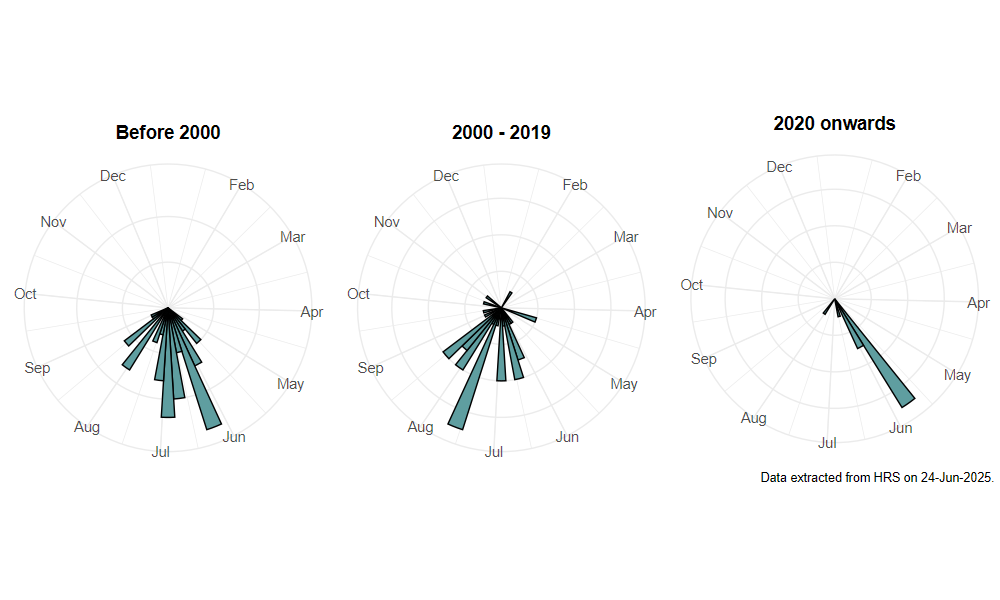Sphaerophoria virgata Goeldlin de Tiefenau, 1974
Identification
Identification difficulty = 4. ![]()
![]() according to Ball & Morris, 20241
according to Ball & Morris, 20241
Biology
Larvae unknown, but those of Sphaerophoria are predaceous upon aphids and other soft bodied Homoptera. It therefore seems likely that S. virgata will exhibit similar associations, possibly associated with homopterans on ericaceous shrubs. Adults are known flower visitors and have been reported from Heather Calluna vulgaris flowers and Tormentil Potentilla erecta flowers.
Flight period
The following plots show the number of unique records per week excluding those reported to be of immature stages.

Status
Lower Risk (Nationally scarce) - Ball & Morris, 20142. Notable - Falk, 19913.
Distribution
A scarce and little known species that appears to favour more western and northern locations but which also occurs on the heathlands of Dorset, Hampshire and Surrey. There is also an outlying record from the Ashdown Forest area of Sussex.

Trends
The following plots show the Frescalo TFactor vs year and a map of the rescaled frequency (all records) for the species.
-
Ball, S., & Morris, R. (2024). Hoverflies of Britain and Ireland. WILDGuides (3rd ed.). Oxford: Princeton University Press. ↩
-
Ball, S., & Morris, R. (2014). A review of the scarce and threatened flies of Great Britain. Part 6: Syrphidae. ( No. 9). Species status (pp. 1–130). Peterborough: JNCC. ↩
-
Falk, S. (1991). A review of the scarce and threatened flies of Great Britain. ( No. 39). Research and Survey in Nature Conservation (pp. 1–194). Peterborough: NCC. ↩